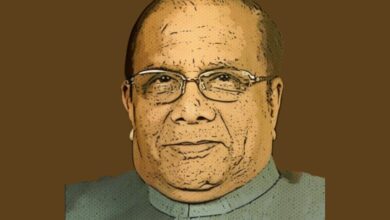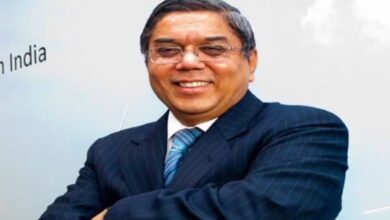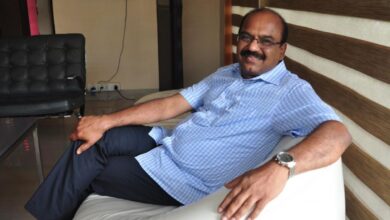Delhi Budget 2021 Highlights: Focus on education, health in AAP government’s “Desh Bhakti” budget

The Aam Aadmi Party claimed its majority in the Delhi elections in 2015 mostly because of the party’s fulfilled promises and notions directed particularly towards the common man. One of the most important things for the common man, as the way forward, is the budget because every decision vividly impacts those that fall in the lower-class and middle-class category. The recent budget announced by the Delhi Deputy Chief Minister Mr Manish Sisodia is expected to outlay targets on grounds for improvement of those hit by the pandemic and the way forward. Let’s see what the budget has in store for the people of Delhi.
The so proclaimed Rs 69,000 crore budget announced by the Deputy Chief Minister is being announced as the ‘Desh Bhakti’ budget owing to its target to set up 500 high mast tricolours across the city. As another move on the lines of the ‘Desh bhakti theme, the Delhi government has announced allocation of Rs 10 crore for programmes and events on the life of the father of Indian constitution, B.R. Ambedkar, which are to be observed during the celebrations of the Desh Bhakti programme. With the world’s largest protest happening right in the heart of the state, a similar allocation has been made for the programmes and events on the life of the face of Inquilaab, Shaheed Bhagat Singh. We cannot deny the explicit presence of Desh Bhakti or patriotism in the budget, more so with the government’s decision to open its first Sainik schools in the state, with the subject of Desh Bhakti being a part of the curriculum.
However, patriotism in its true sense is when it is for the people before it is for the country. So, the big question here is- what does the budget inculcate for the people?
The most urgent parameter that the global pandemic made India realise is the need for good health and fitness facilities. Keeping in view the need for equitable health facilities for all people of the state, the government has allocated a total of Rs 9934 crore, summing up to about 14 per cent of the total outlay for the budget. The vaccine drive, which is currently being undertaken in the country, is said to be made available at no cost at all the government hospitals of the state, which is a considerably good decision because this would ensure availability to all and thus, would help maintain health as a necessity and not a privilege. However, the condition of government hospitals and facilities at this point is rather worrying. Hence, accessibility could be a challenge if the situations aren’t improved. As an effect to realise the decision of free availability of vaccines, Rs 50 crore has been allocated for the vaccination drive.
The past year also witnessed the growing inequality in terms of gender and income opportunities. Data from various sources explained how pandemic made women a much more vulnerable section as compared to men. As a result, calls for action to reduce this inequity are loud and evident. The budget being talked about includes the decision to inaugurate a hundred mohalla clinics dedicated to women, with the eventual number comprising of at least one in each of the 272 municipal wards. A cloud-based health information management system was also announced aiming at increasing transparency and accessibility of health services to the people. On these lines, a digital health card is also initiated. Schemes like Delhi Ke Farishte that aims at felicitating citizens who bring accident victims to the hospital are also to be continued in the coming years, as announced in the budget.
Further, the government introduced Rs 16,377 crore to be allocated towards the education sector, primarily focussing on opening of new campuses to ensure better performance of the state in higher education sector, especially considering the growing demands of the county. With new campuses on the verge of opening, the expected number of increase in seats range to be about 8000. It has also claimed to open a new law university and a new teachers’ university. On the shift of education to the digital mode during lockdown, Mr Sisodia said “There were teachers in our schools who did not know how to use smartphones. We trained them and they conducted online classes for one year,” said Sisodia. These schools will not be restricted to four walls. The focus will only be on studies, teachers, children, enrolment, and curriculum, he said. Virtual model schools are being launched by the government that aims at promoting any time teaching and any time learning. Talking about this idea, the deputy chief minister said “We have started work on its design and it may be the first of its kind in the world. Any child in the country wanted to study under the Delhi model of education can make use of this”. However, so many students had to drop out of education during the pandemic owing to the lack of resources necessary to access online education- which is a clear indication that Delhi is not yet ready for the digitalisation of education. As a result, a significant allocation to fill in the resource gap for digitalisation is the need of the hour, something that the budget conveniently misses out on.
The budget also focusses on infrastructural development, especially in the sports and automobile sector. Speaking about electronic vehicles, the minister said that one of the most progressive steps taken by the government is the Delhi Electronic Vehicle (EV) Policy. Before the policy, only 0.2 per cent of the vehicles in Delhi were EVs, which increased to 2.2 per cent after the policy. As much as 7,000 new EVs were rolled out after the policy. A further plan to introduce 1300 e-buses is the state is also being talked about, with 300 e-buses expected to arrive this year. These steps are taken as a measure to improve Delhi’s poor air quality.
It all looks like stars and moon on paper, but the real challenge in this country is implementation. How much of this get implemented is yet to be seen, but one thing we can be certain of is the fact that change is coming, sooner or later.




